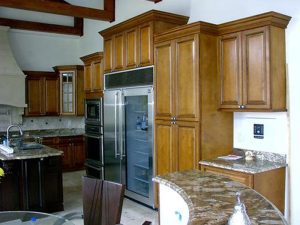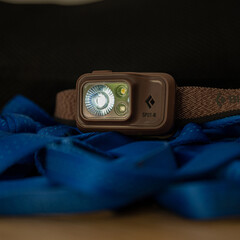Cabinet Refinishing Sacramento is ideal for homeowners with structurally sound cabinets who are looking for a simple color change. It can also be used to tackle surface-level damage like nicks, scratches and stains.

Cabinet refinishing is a cost-effective, quick option that can breathe new life into your kitchen. It’s also an eco-friendly alternative to replacing your cabinets.
Refinishing is a cost-effective option that can provide a dramatic transformation at a fraction of the price of full cabinet replacement. Refinishing requires fewer materials than refacing, so the overall project is more affordable. This makes it a great choice for homeowners who want to update their kitchen without breaking the bank.
Unlike painting, which can be done by most homeowners, refinishing is best left to professionals. The refinishing process involves meticulous preparation and application that ensures the final result is flawless. It begins with surface cleaning, then sanding to remove any imperfections and ensure a smooth canvas. Then, the chosen stain or paint is applied evenly and carefully, followed by a protective topcoat that enhances durability.
Another benefit of refinishing is that it preserves the original structure of your cabinets, which can be an important consideration for older homes or those with architectural features. This also means that your cabinets will be easier to maintain over time. The durable finish will be more resistant to scratches, dents and other signs of wear and tear, requiring less maintenance and touch-ups than some other finishes.
If you’re planning to sell your home in the future, the refinishing process can add significant value by improving your kitchen’s aesthetic. Potential buyers will see the update and be more likely to pay a higher selling price for your home.
Refinishing is also a more environmentally friendly option than other remodel options, such as replacing your cabinets. Reusing existing materials reduces landfill waste and the environmental impact of manufacturing and transporting new materials. This is especially true if your old cabinets still have a good structural integrity, meaning they are not damaged or worn down.
Time-Saving
Cabinet refinishing is an efficient way to revitalize your kitchen without the expensive price tag of full replacement. It allows you to keep your existing cabinets while introducing new finishes that complement your modern design preferences. This is a great option for homeowners who want to increase the value of their homes but do not have the budget for a complete remodel.
Unlike a full remodeling project, the refinishing process is relatively quick and can be completed in a few days or weeks. It also minimizes disruption to your home, as you won’t have to live with an unusable kitchen for an extended period of time. Moreover, since it does not involve tearing out old cabinets or replacing them, refinishing is a greener choice, as it reduces waste and the demand for raw materials.
The cabinet refinishing process involves stripping, sanding, and painting or staining the cabinets to create a clean and smooth surface. This helps the new finish to adhere properly, which results in a high-quality, durable finish. Refinishing professionals also have systems in place for minimizing dust and waste, ensuring that your kitchen is as tidy as possible while the work is underway. In addition, they may offer a warranty or guarantee to provide added peace of mind.
While the refinishing process is less costly than a full remodel, it still requires an investment of time. However, the results are worth it. In fact, a well-done job can transform your entire kitchen and add significant value to your home. If you’re not sure whether cabinet refinishing is right for you, consult with a professional to learn more about the process and benefits.
Whether you’re a do-it-yourselfer or prefer to hire a professional, cabinet refinishing is an excellent way to make your kitchen look new again. The process is simple and can be done in a few days or a couple of weeks, depending on the size of your kitchen. Before the work begins, it is important to clear out your cabinets and protect countertops and appliances with coverings. Also, make sure to label each cabinet with a number or letter so that you can reinstall them correctly after the work is done.
Eco-Friendly
Cabinet refinishing is eco-friendly and efficient, as it preserves your existing cabinets while giving them a new look. It’s an excellent option for homeowners with a tight budget who still want to update their kitchen. Refinishing involves stripping the old finish, sanding the surfaces, and then applying a new stain or paint. The process is safer and faster than replacement, and it minimizes waste by reusing your existing cabinets. The new finish will also improve the durability of your cabinets, so they’ll hold up better to frequent use and everyday wear and tear.
Sustainable design trends are gaining popularity in the home improvement world. Many cabinet manufacturers now offer eco-friendly options for your home, including bamboo veneers and reclaimed wood, which add a unique style while supporting responsible forestry practices. In addition, modern water-based paints are free of harmful chemicals and help to create a healthier indoor environment.
While many people choose to replace their existing cabinets, this can be costly and wasteful. Purchasing and transporting new cabinets requires the use of fossil fuels and other resources, which can have an adverse impact on the environment. Moreover, the disposal of old cabinets can contribute to waste buildup in landfills and other areas. Cabinet refinishing is a better alternative to replacement because it eliminates the need for transportation and resource consumption and minimizes waste by reusing existing materials.
When choosing eco-friendly cabinet finishes, opt for durable materials that resist stains and scratches. This will minimize the need for regular cleaning and maintenance, which reduces energy consumption. Homeowners can also choose to incorporate energy-efficient lighting into their cabinet designs, which will further reduce electricity usage and lower utility bills.
It’s essential to hire a professional when refinishing your cabinets. The process involves handling chemicals and equipment that require specialized knowledge and experience. Attempting to refinish cabinets without the proper tools and techniques can be dangerous and result in an uneven or unsatisfactory finish. In addition, it’s important to follow safety precautions and protect your property to avoid injury or damage. By hiring a professional, you can ensure a safe and efficient refinishing process that will yield stunning results.
Customizable
Cabinet refinishing opens up a world of design possibilities, allowing you to create a look that reflects your unique style. You can choose from a wide array of paint colors, and you can also add specialty finishes like glazes or distressed looks to add character to your cabinets. By customizing your look, you can create cohesion between your cabinets and other elements in your home to elevate your space and make it truly your own.
When you choose to refinish your cabinets, the first step is to clean and sand your existing surfaces. This process removes the existing finish and prepares the surface for refinishing, ensuring a smooth and durable finish that is resistant to water and other common household chemicals. After sanding, you can begin applying the new finish. NHance’s basic cabinet refinishing service includes 2 coats of high-quality paint. You can choose from a range of color options, including classic white, bold blue, and everything in between. You can even select a sheen level, from matte to satin to gloss.
Another option is to stain your cabinets instead of painting them. Staining offers a more natural look, and it allows you to highlight the wood’s natural features. If you’re looking for a more muted color, Furniture Medic’s Color Shift service applies several thin coats of stain to your existing cabinets, giving them a subtle change in hue.
Unlike cabinet replacement, which can take weeks or months, refinishing is a relatively quick process that can be completed in just a few days. This minimizes downtime and disruption to your daily routine, and it can also help you save money on labor and materials costs. It can also improve your home’s value by boosting its curb appeal and attracting prospective buyers.
Choosing the right cabinet refinishing service is an important decision, and it’s important to work with a trusted professional who can provide you with the best results possible. A quality service will use professional-grade equipment and tools to ensure a smooth, lasting finish. They’ll also use a variety of techniques, such as sanding and staining, to achieve a customized look that complements your home’s style.




